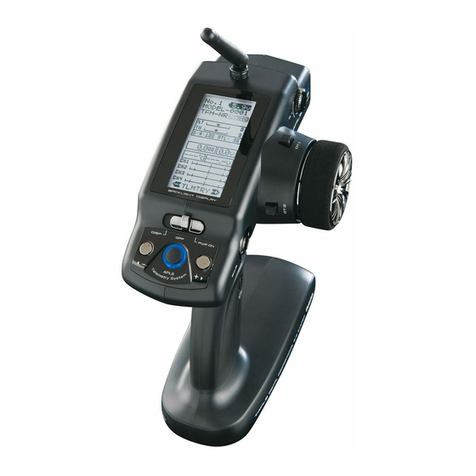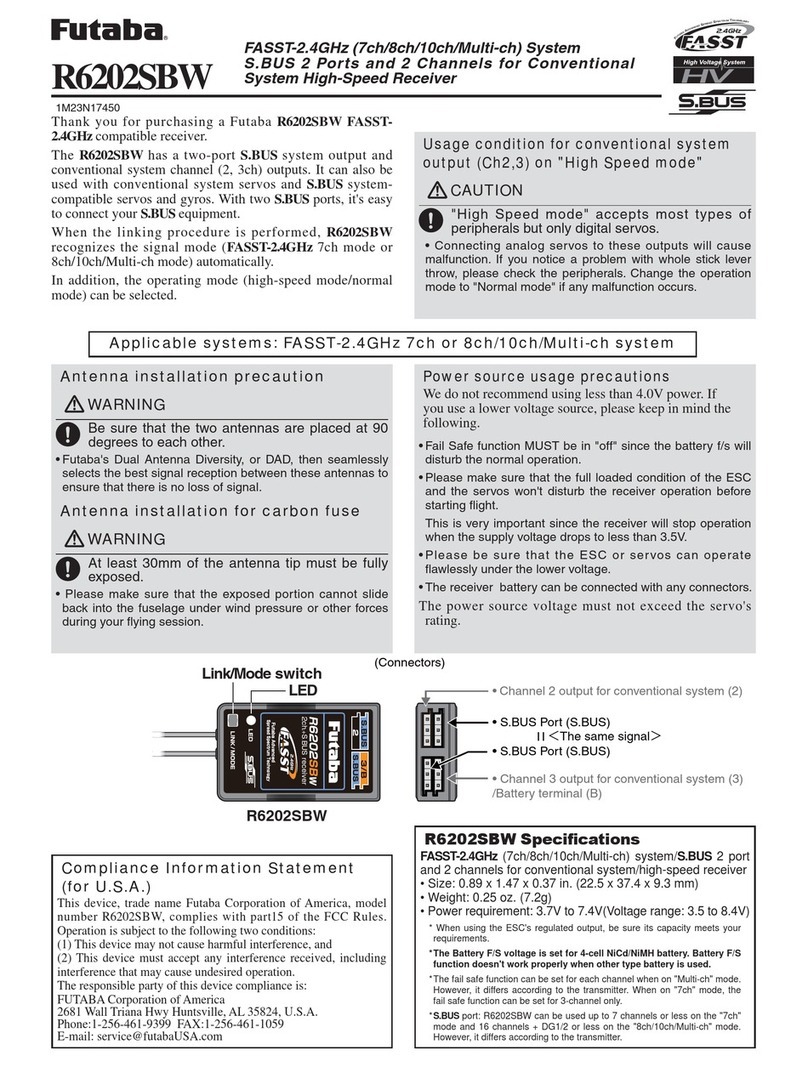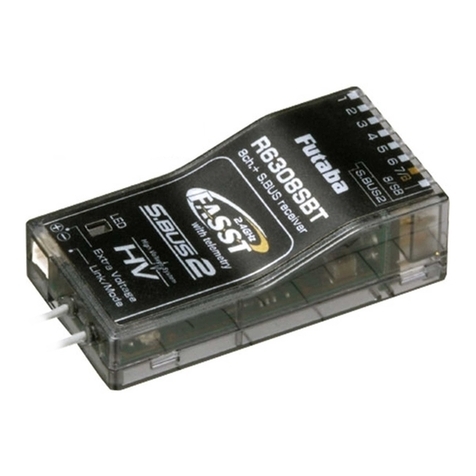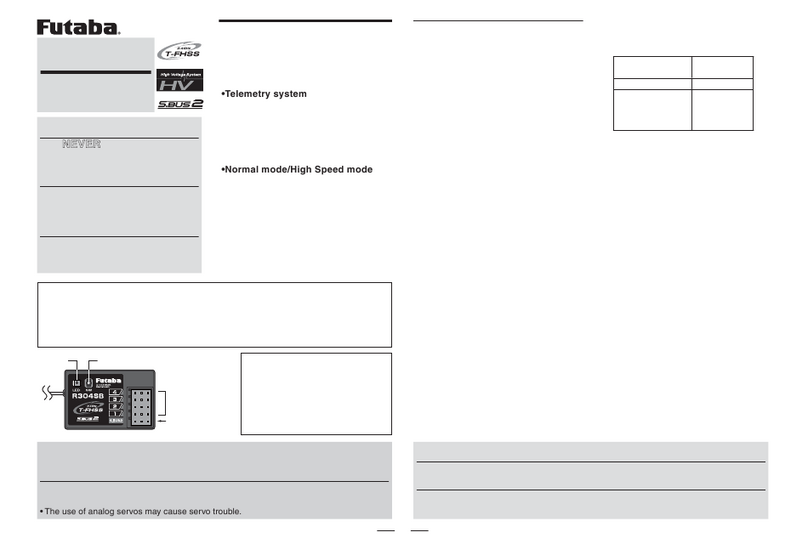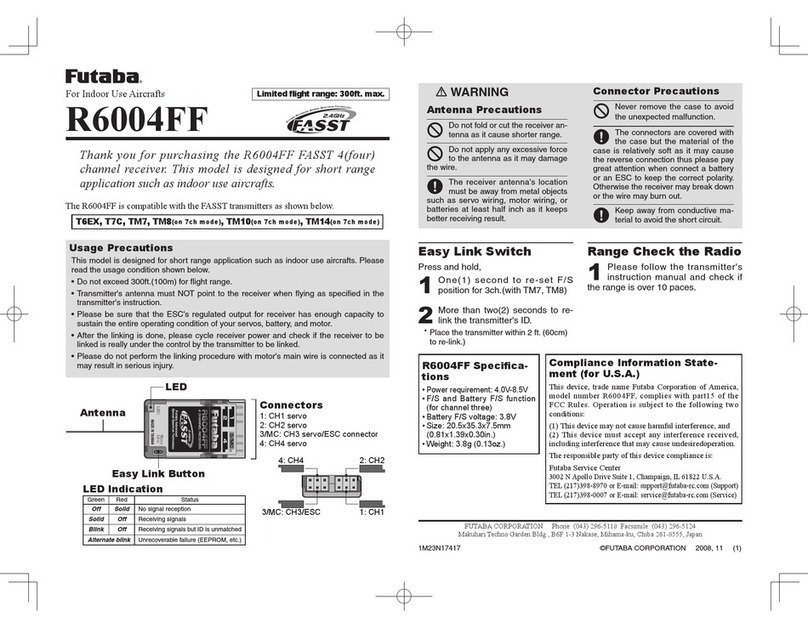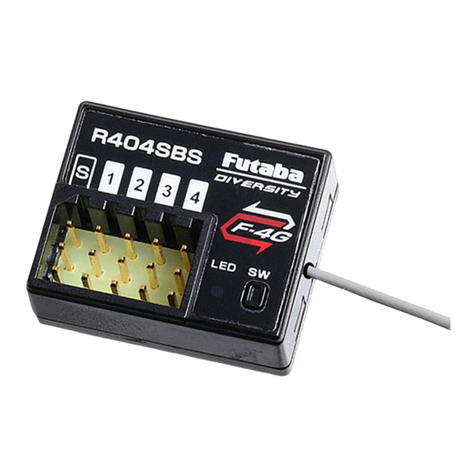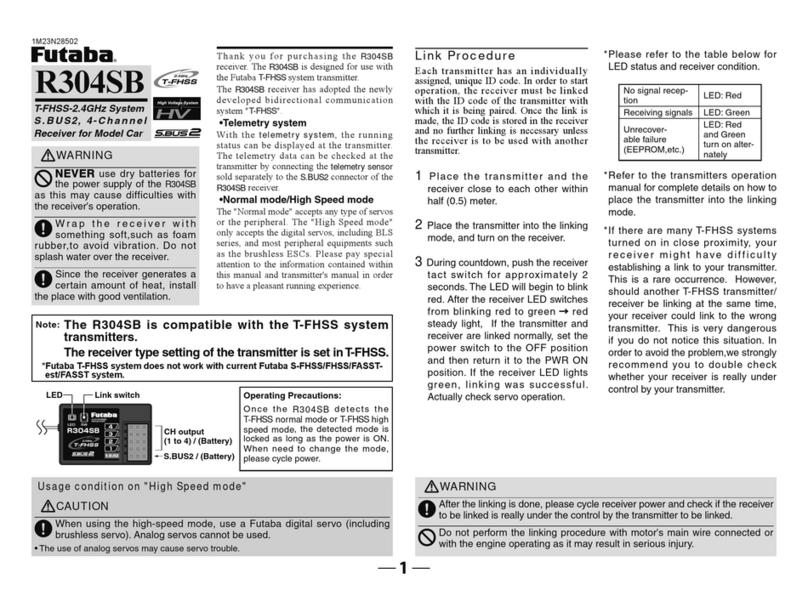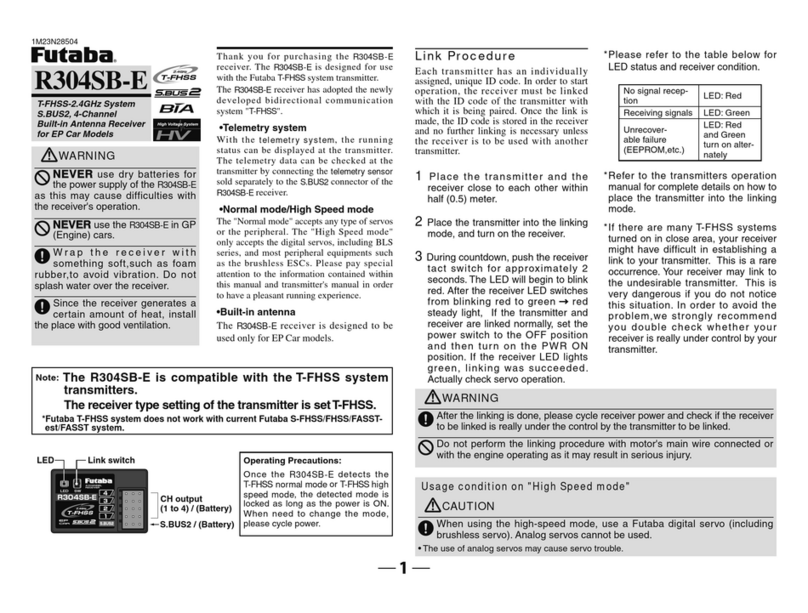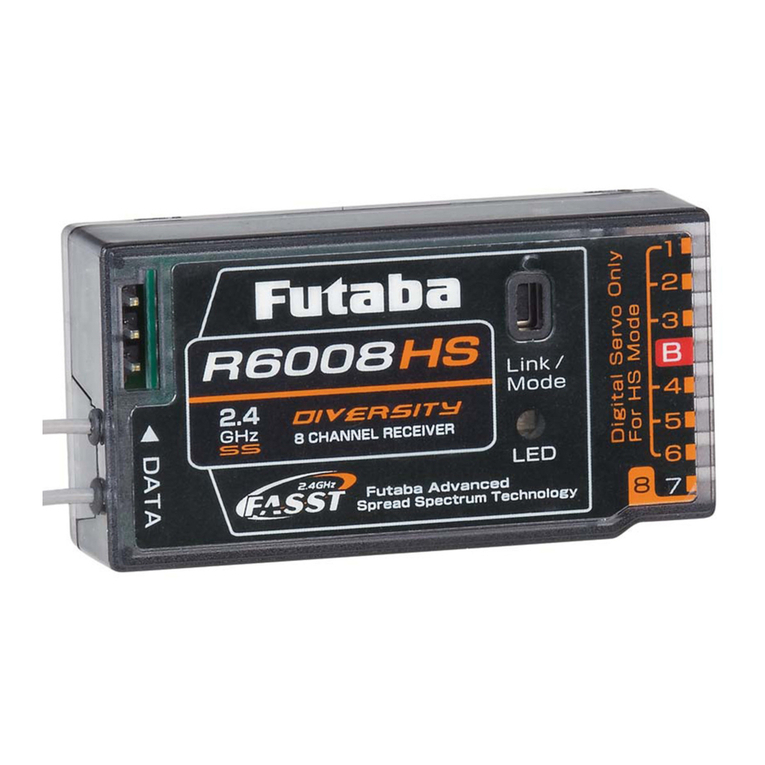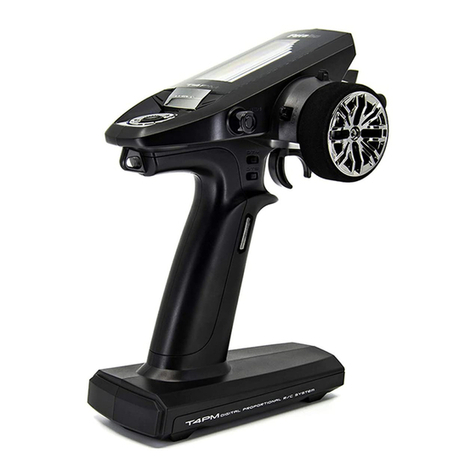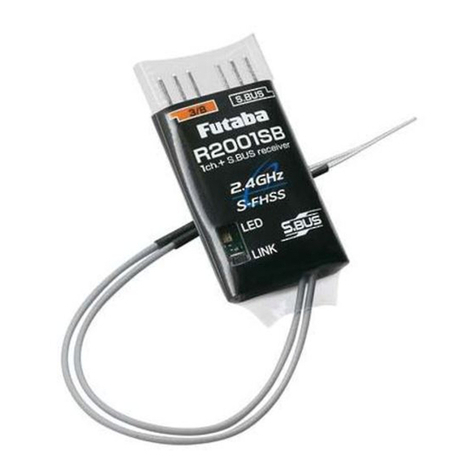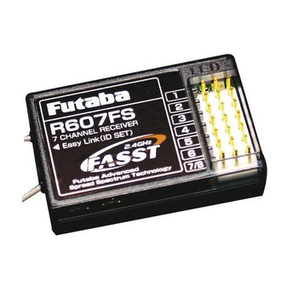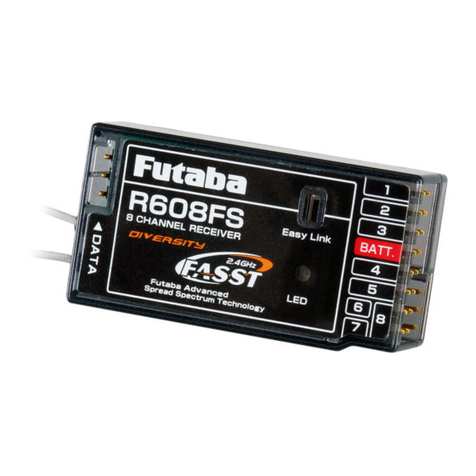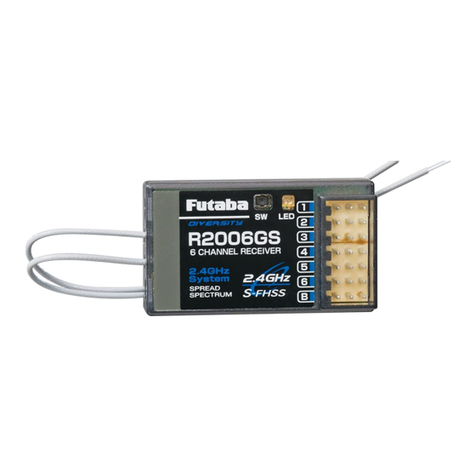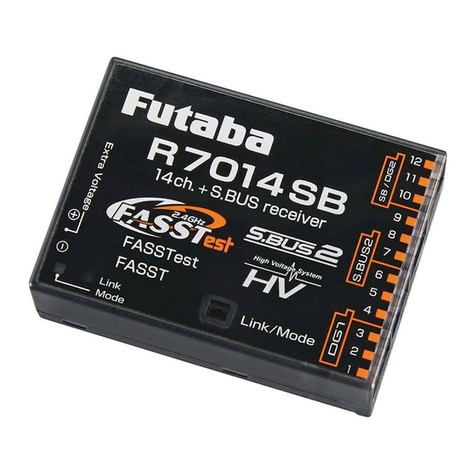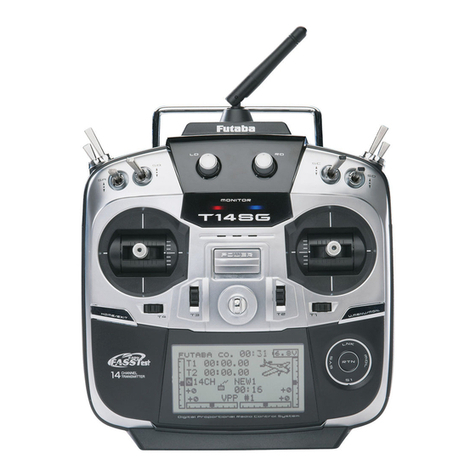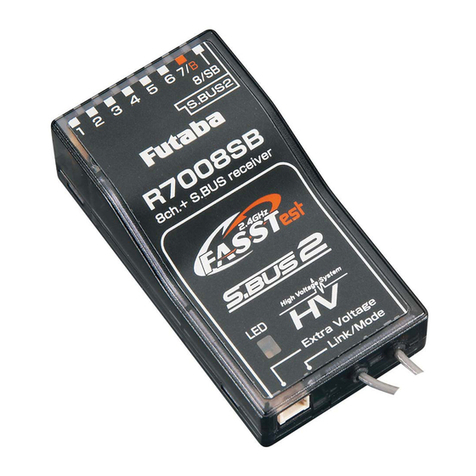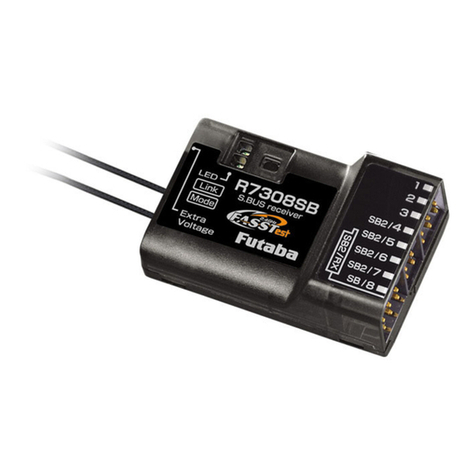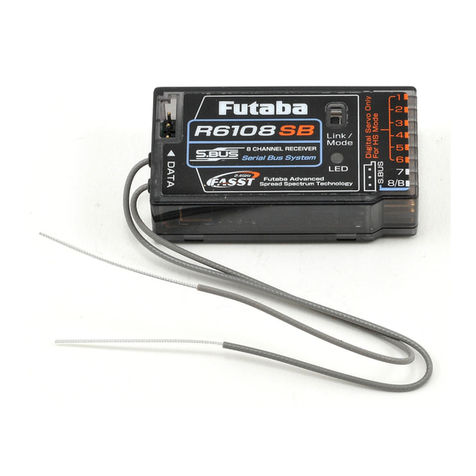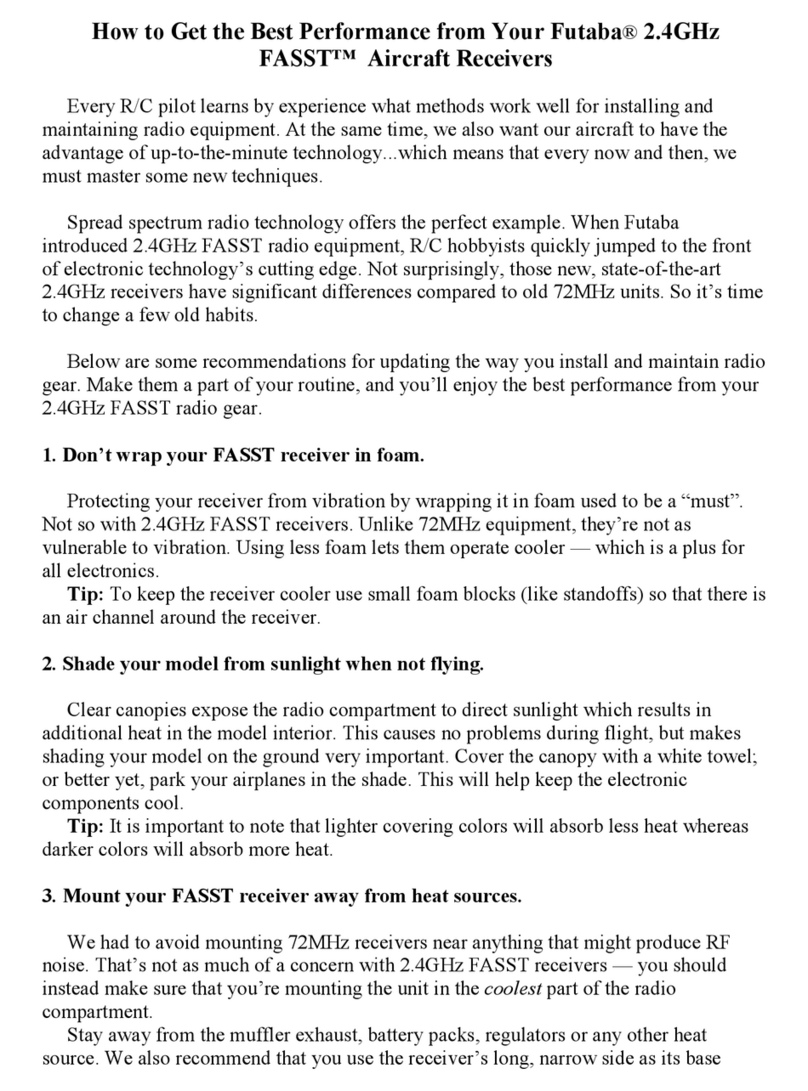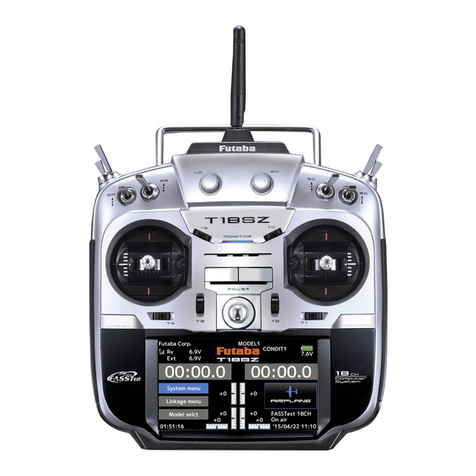
GreenLED
blink System
1time FASSTest
2times FASSTMulti-chNormalmode
3times FASSTMulti-chHigh-speedmode
4times FASST7chNormalmode
5times FASST7chHigh-speedmode
R7006SBSystemtable
Output
connector
Channel
Mode A ModeB ModeC ModeD
11119
222210
333311
444412
5/SB 5 S.BUS 6 S.BUS
6/SB2 6 S.BUS2 S.BUS2 S.BUS2
RedLED
blink 1time 2times 3times 4times
R7006SBCHModetable
Default
*FASST mode cannot use telemetry functions.
ChannelModes
The R7006SB is capable of changing its channel allocations as
described in the table below. This is especially important when using
the receiver in a dual receiver mode. See your transmitter operation
manual for complete details on operating in the dual receiver mode.
1Turn on the receiver. [Transmitter is always OFF]
2Press and hold the Mode/Link button for 5 seconds to 10
seconds.
3When the LED of the receiver changes from blinking red to
blinking red with green, Mode/Link button is released.
4The LED should now blink red two times in the patterns
described in the chart below.
5Each press of the Mode/Link button advances the receiver to
the next mode.
6When you reach the mode that you wish to operate in, press
and hold the Mode/Link button for more than 2 seconds.
When LED blinks in green with red, it is the completion of a
mode change, Mode/Link button is released.
7Please cycle the receiver power off and back on again after
changing the Channel mode.
Systems (FASSTest ⇔FASST) change method
1Turn on the receiver. [Transmitter is always OFF]
2Press and hold the Link/Mode button for more than 10
seconds.
3When the LED begins to blink green the button may be
released.
4The LED should now be blinking green in one of the patterns
described by the chart below.
( Default : FASSTest )
5Each press of the Mode/Link button advances the receiver to
the next system.
6When you reach the system that you wish to operate in, press
and hold the Mode/Link button for more than 2 seconds.
When the LED blinks green and red, the system change is
complete. Release the Mode/Link button.
7Please cycle the receiver power off and back on again after
changing the system.
Default
FASSTest is a bidirectional communication system between the
R7006SB receiver and FASSTest capable transmitters. Multiple
optional telemetry sensors may be connected to the S.BUS2 on the
receiver and that data is in turn displayed on the transmitter.
Link to the transmitter : FASSTest
1Bring the transmitter and the receiver close to each other,
within 20 inches (half meter).
2Turn on the transmitter. Place the transmitter into the receiver
linking mode.
3Turn on the receiver.
4The receiver will wait for the linking process to begin for 2
seconds. Following that it will return to the normal operation
mode.
5When the LED of the receiver changes from blinking red to
solid green, linking is complete.
(A link waiting state is ended in 1 second.)
• Refer to the transmitter's operation manual for complete details on how
to place the transmitter into the linking mode.
• If there are many FASSTest systems turned on in close proximity, your
receiver might have difficulty establishing a link to your transmitter.
This is a rare occurrence. However, should another FASSTest
transmitter/receiver be linking at the same time, your receiver could link
to the wrong transmitter. This is very dangerous if not noticed. To avoid
the problem, we strongly recommend that you double check whether
your receiver is really under control by your transmitter.
• If the System Type of the transmitter is changed, the receiver will need
to be re-linked to the transmitter.
Link to the TMA-1 Telemetry Adapter
1R7006SB has to be FASSTest.
2First, a transmitter and a receiver are linked.
3Transmitter is turned off.
4Press and hold the Mode/Link button of R7006SB for 15 seconds.
5After the R7006SB LED lights in this sequence, Red Blink -- Red with Green
Blink -- Green Blink -- Red Blink, release the Mode/Link button.
6When in link mode with the R7006SB, the TMA-1 LED blinks green along with
the red LED of the receiver.
7Push the TMA-1 link button as long as necessary for its LED to blink.
8Completion of a link will change LED of TMA-1 green from red only for a
moment.
9Please cycle the receiver power.
S.BUS2
S.BUS2 extends S.BUS and supports bidirectional communication.
Sensors are connected to the S.BUS2 port.
Link to the transmitter : FASST
1Bring the transmitter and the receiver close to each other,
within 20 inches (half meter).
2Turn on the transmitter and receiver.
3Link operation is performed by the Link/Mode switch.
• When using TM-8 module, it's possible to set F/S position (only 3CH).
0 to 1 sec. 1 to 2 sec. More than 2 sec.
0 sec. 1 sec. 2 sec.
Press and Hold time
No function
With TM-8
(not included in this set)
To set the F/S
position(No re-link)
Re-link(ID set) and to
set the F/S position
No function
Besides TM-8 Re-link(ID set)
*Refer to the instruction manual of the transmitter or module used for a description
of the linking operation, F/S position setting methods and other details.
R7006SB also can use the FASST-Multi/7ch mode. The FASST mode does
not support the telemetry functions. The FASST system has a normal mode and
a high-speed mode. However, in the High-speed mode, analog servos cannot be
used.
FASSTest
FASST
FUTABA CORPORATION
1080 Yabutsuka, Chosei-mura, Chosei-gun, Chiba-ken, 299-4395, Japan
Phone: +81 475 32 6982, Facsimile: +81 475 32 6983
©FUTABA CORPORATION 2015, 12 (1)
本產品符合低功率電波輻射性電機管理辦法 第十二條、第十四條等條文規定
1. 經型式認證合格之低功率射頻電機,非經許可,公司、商號或使用者均不得擅自變更頻率、加
大功率或變更原設計之特性及功能。
2. 低功率射頻電機之使用不得影響飛航安全及干擾合法通信;經發現有干擾現象時,應立即停用,
並改善至無干擾時方得繼續使用。前項合法通信,指依電信法規定作業之無線電通信。低功率
射頻電機須忍受合法通信或工業、科學及醫療用電波輻射性電機設備之干擾。
